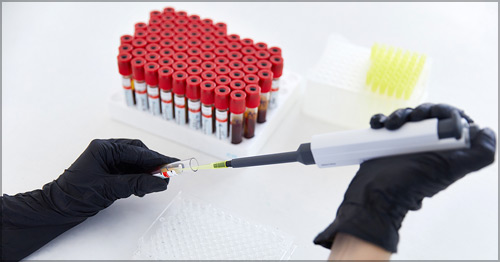A sampler (micropipette) is one of the most important and essential laboratory equipment used to remove and transfer solutions and liquids in microliter quantities. In fact, the sampler is a simple pipette that can move liquid samples (with a small scale).

A sampler (micropipette) is one of the most important and essential laboratory equipment used to remove and transfer solutions and liquids in microliter quantities. In fact, the sampler is a simple pipette that can move liquid samples (with a small scale).
A sampler or micropipette or pipettor is one of the devices that are used to move and suck solutions in molecular biology laboratories with a range between 0.2 and 10,000 microliters.

Today, the basis and method of working with a laboratory sampler is done in two ways, mechanical and electronic. In fact, mechanical samplers with the help of hand power and electronic samplers with the help of electric power perform the act of emptying and suctioning the samples.
Nowadays, micropipettes or laboratory samplers are produced in various designs, such as electric and manual, based on the volume of solution in two types of variable and fixed samplers, and in terms of accuracy and application in two models of multi-channel or single-channel samplers and in laboratory centers. It is sold.
The variable sampler is a suitable laboratory micropipette that is used to remove and move different volumes of liquid samples.
Fixed sampler are also other micropipette samples based on solution volume. This model of sampler is also used to take a known and specified volume of liquids.
It should be noted that although fixed samplers have higher accuracy than variable samplers, variable micropipettes are used more because they have a higher volume range.
This model of sampler is also suitable for moving liquids with high precision, having two models, 8-channel sampler and 12-channel sampler. In fact, this model of micropipette, like a normal sampler, is suitable for sampling solutions with a volume of several microliters to several hundred microliters.
This sampler is also one of the most important micropipettes used in research centers and medical laboratories, which is always used to distribute and move liquids with measured volumes.

